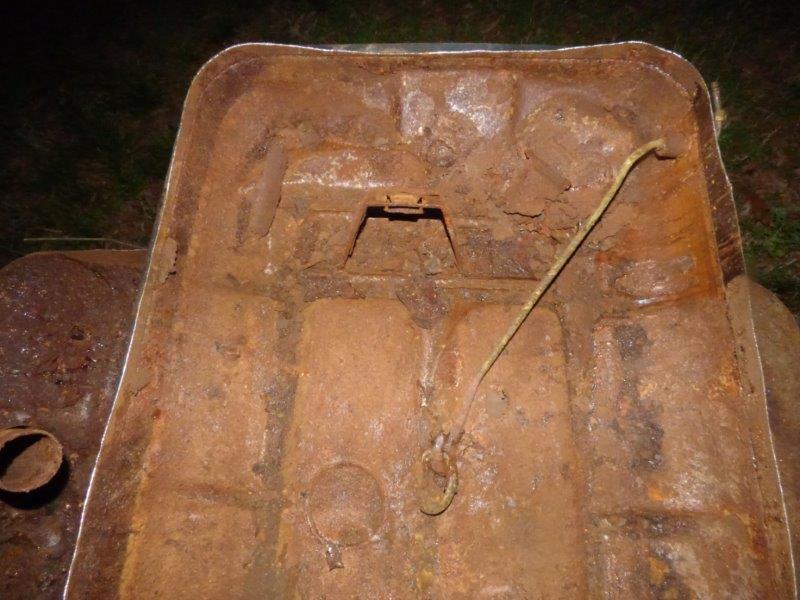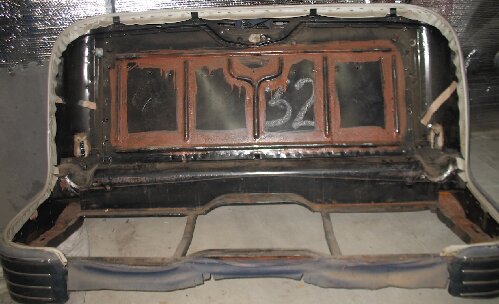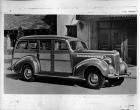|
Re: Stewart's 1955 Packard 400
|
||||
|---|---|---|---|---|
|
Forum Ambassador
|
Any chance you could measure it accurately enough to see if it is a stock size that McMaster or MSC might carry. On McMasters site about 3/4 down the page of various bronze items that will open is an assortment of styles on various oil and non oil sleeve shaft bearings and bushings. If you see something that looks promising clicking to bring up that assortment and then again on the part number will bring up a box where you can select a product detail page to see the precise measurements. I didn't check to see if they had bushings in any other metals.
https://www.mcmaster.com/products/bushings/?s=bronze+bushings
Posted on: 4/21 14:56
|
|||
|
Howard
|
||||
|
||||
|
Re: 1937 120 Conv. Sedan - Blanche
|
||||
|---|---|---|---|---|
|
Forum Ambassador
|
What about a long flat piece of lumber such as a 1 x 6 x approximate length of running board clamped in two or three places to hold the top down while you fold, glue and clamp the edges. Another narrow strip of wood clamped across the board edge could hold one side as it dried before doing the other side. It might even take some stress off the fold and top by using some gentle heat to soften a narrow area of the rubber a bit before the fold.
If the top is wanting to move or separate now am wondering what that says as far as the strength of the overall bond and possibly some lifting or puckering issues down the road. With the edges fixed and unable to move what would happen as the top surface expands or contracts.
Posted on: 4/21 10:50
|
|||
|
Howard
|
||||
|
||||
|
Re: 1949 2262 Died On Me
|
||||
|---|---|---|---|---|
|
Forum Ambassador
|
That story about the ant and the fuel flex line is a good reminder. While the flex line was not mentioned earlier with possible things to check, it is a known failure point. With the slightest disturbance or even just being put back into service some of those old and brittle lines can have the lining crack and a chunk break away to be pulled into the bore with pump suction. Almost makes a perfect check valve with increased suction pulling the lining farther into the bore and blocking flow only to have it fall back into place and let the engine run OK when at idle.
Posted on: 4/20 13:02
|
|||
|
Howard
|
||||
|
||||
|
Re: Carb nuts
|
||||
|---|---|---|---|---|
|
Forum Ambassador
|
Believe they are 5/16-24 and there should also be a lockwasher used with the nuts.
Posted on: 4/20 12:56
|
|||
|
Howard
|
||||
|
||||
|
Re: hph's 400
|
||||
|---|---|---|---|---|
|
Forum Ambassador
|
I believe it is detailed in one of the books that early 56 senior grills were chrome but some in styling felt it was a bit too much as the eggcrate detail was sort of lost in the bright background. Around that same time Cadillac came out with a similar gold grill mesh treatment on one of their models and styling took notice. As soon as it was possible to get parts they had the change to gold mesh put into production.
I don't remember reading of any chrome scripts on 55-6 senior models but articles said they did make the Executive scripts chrome when that model came along as a means to denote the Executive as being a slightly lower cost offering.
Posted on: 4/20 12:44
|
|||
|
Howard
|
||||
|
||||
|
Re: 1947 356 engine
|
||||
|---|---|---|---|---|
|
Forum Ambassador
|
I think the item on your first photo is a check valve and if I am correct, from the second photo I think it is an improper installation of a drain which was added in 48 and was retrofittable to earlier 356 engines. The drain would have a check valve assembly on the end of the tube which closes as soon as vacuum is present but will open when the engine is stopped so any condensed fuel sitting in the bottom of the intake manifold can drain out. That item is detailed on page 36 in a service counselor article. In that photo the check valve looks a bit different in shape than what I think is what you have in your first photo.
On a Clipper thru 47 the wipers were electric so no dual action fuel pump. The usual vacuum routing is not present so on the top of the intake manifold toward the rear is a plugged port which is available if needed for vacuum accessories such as the vacuum antenna or windshield washer. In the middle in the square manifold section under the carb is a larger plugged port used if the car has the Electromatic clutch. I think someone used that port for the drain which means the drain would not work as intended. On 356 engines used in models with vacuum wipers a port on the front top similar to the one at the rear went to the fuel pump vacuum section and then on to the wipers and accessories. The middle port still went to the Electromatic but some models also had the vacuum to the fuel pump originate there instead of at the front top port.
Posted on: 4/20 11:32
|
|||
|
Howard
|
||||
|
||||
|
Re: 1949 2262 Died On Me
|
||||
|---|---|---|---|---|
|
Forum Ambassador
|
All the above, particularly the tank cap and a possibility something is floating around in the bottom of the tank periodically blocking the line inlet. If the issue turns out to be at a consistent place and you can pin it down to a specific level where it seems to happen it could be the pickup tube in the tank has developed the pinhole. On later tanks like the one 53 Cavalier mentions there are two known points where pinholes develop. Your tank is a bit different and I don't know if enough failures have happened or been observed to know approximate gauge levels on that style.
The factory filter was optional and of the ceramic type. If installed it would be in a glass bowl next to the carb but a previous owner could have installed something more modern in the line between the tank and engine. The ceramic types have a tendency to clog with microscopic particles of rust and if car had a long sit with no fuel in the bowl varnish and other byproducts of fuel deterioration clogging the pores could be the issue. Even after cleaning it can look fine and pass air if you blow thru it but still not be capable of allowing enough fuel to pass to keep the engine running. If the engine still has a mechanical pump and fuel is running thru it, the bottom of the pump covered by a metal dome shaped sediment bowl contains a screen. That screen could be clogged with rust particles. If you remove the bowl best to have a new gasket or some cork material handy to make a new gasket as the originals frequently do not seal again after being disturbed. Here is what the pickup tube inside of the tank looks like. Fuel is picked up at the open end of the tube which points down and rests roughly 1/8 inch above a sort of depression on the tank bottom. There is no screen or protection around the tube. Attach file:  1003_58e0e23f7c91b.jpg (76.94 KB) 1003_58e0e23f7c91b.jpg (76.94 KB)
Posted on: 4/19 20:31
|
|||
|
Howard
|
||||
|
||||
|
Re: Stewart's 1955 Packard 400
|
||||
|---|---|---|---|---|
|
Forum Ambassador
|
Just my
 When I replaced my fuzzies that used clips I taped and wedged the strip in place then used a sharp pointed 90 degree scribing tool to push in thru the existing door holes from the inside and mark the locations in the rubber on back of the strip. If you don't want to do that or if your fuzzies are the type held with staples then as long as the back of the strip is somewhat smooth and there are no large gaps I think they could be glued by using a good strength heavy adhesive. That alone may be enough but with the force of the window and particularly the chrome frame surround pushing and pulling against it I would also think a bit of mechanical strength would be a good idea. Using a clip at each end and maybe one in the middle would add a bit of security. Of course as HPH mentioned, the downside to adhesive is they will be difficult to remove again.
Posted on: 4/15 20:05
|
|||
|
Howard
|
||||
|
||||
|
Re: Don’s 1937 (120) 138CD Deluxe Touring Limo
|
||||
|---|---|---|---|---|
|
Forum Ambassador
|
Not familiar with prewars so can't say but wouldn't be surprised if it is an assembly. Clippers and some other years had a welded or stamped one piece unit.

Posted on: 4/13 23:43
|
|||
|
Howard
|
||||
|
||||








